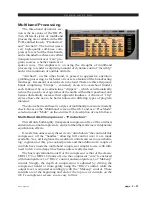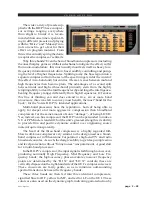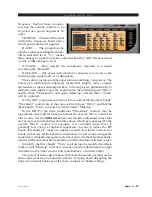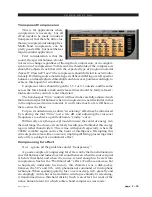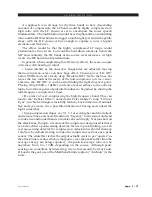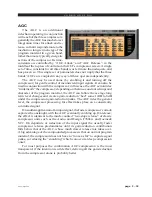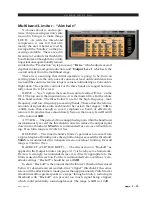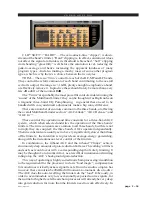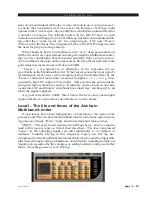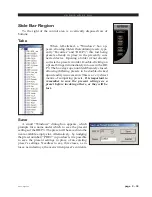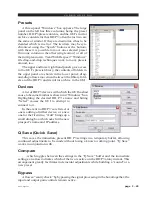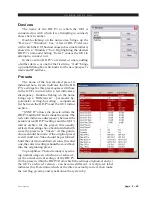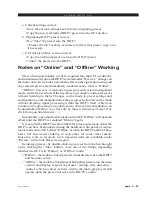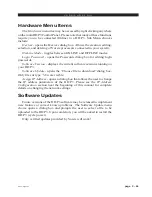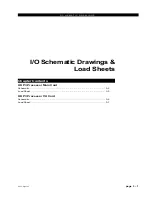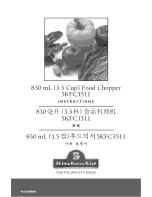
V O R S I S H D P 3 G U I
page 2 – 30
HD P3 / Aug 2006
Transparent Compression
This is for applications where
compression is necessary, but all
effort needs to be made to make it
transparent, that there be little clue
that any compression is taking place.
Multi-band compressors can be
pretty good at this, but nevertheless
require careful application.
First consideration is that the
sound, the spectral balance, should
not seem to change regardless of the depth of compression, or in compari-
son to out of compression. To this end, the thresholds of the compressors
should be adjusted such that with the expected type of program material
(Speech? Classical? Jazz?) the compressors should all start to act simulta-
neously. Differing source material types will have differing overall spectral
balances, and need adjusted thresholds and crossover points accordingly to
achieve this hoped-for simultaneity.
Compressor ratios should be gentle, 1.5:1 or 2:1 outside, and the same
across the three bands; attack and release times should be fairly relaxed -
mid-scale on the controls is not a bad start.
The band output “Trim” controls will need to be carefully adjusted such
that a natural spectral balance when in compression is not dissimilar to that
in the unprocessed source material. It won’t take much, a few dB here or
there across the three.
For pre-recorded music, a subtle “sweetening” effect may be introduced
by reducing the mid “Trim” just a few dB, and adjusting the crossover
frequencies to achieve a gentle dynamic “smiley” curve.
With nearly everything except modern music, the center of energy is in
the mid-range: the crossovers are likely best disposed to bracket this energy
region, rather than divide it. This is true with speech especially, where the
200Hz to 4kHz region carries the brunt of intelligence. Disrupting this
critical spectral area with a crossover (implying differing processing either
side of it) is asking for an unnatural effect.
Compressing for effect
No.1 - ignore all the guidelines under “transparency”.
A good example of compressing for effect can be the transformation in
spectral balance and indeed overall sound between when the source signal
is below threshold, and when the source is loud enough to be well into
compression. Such is the “Wolfman Jack” effect. (For those unaware, but
to hopelessly understate his history, this character was a disk-jockey
between the 50’s and 80’s with phenomenal command of microphone
technique. When speaking quietly, his voice was deep, rich, gravelly and
envelopingly warm, but as he started to wind up eventually to screaming,
it transformed into a thin hard shriek.) Such is an effect, for want of the
native human talent, for which a three-band compressor was made.












